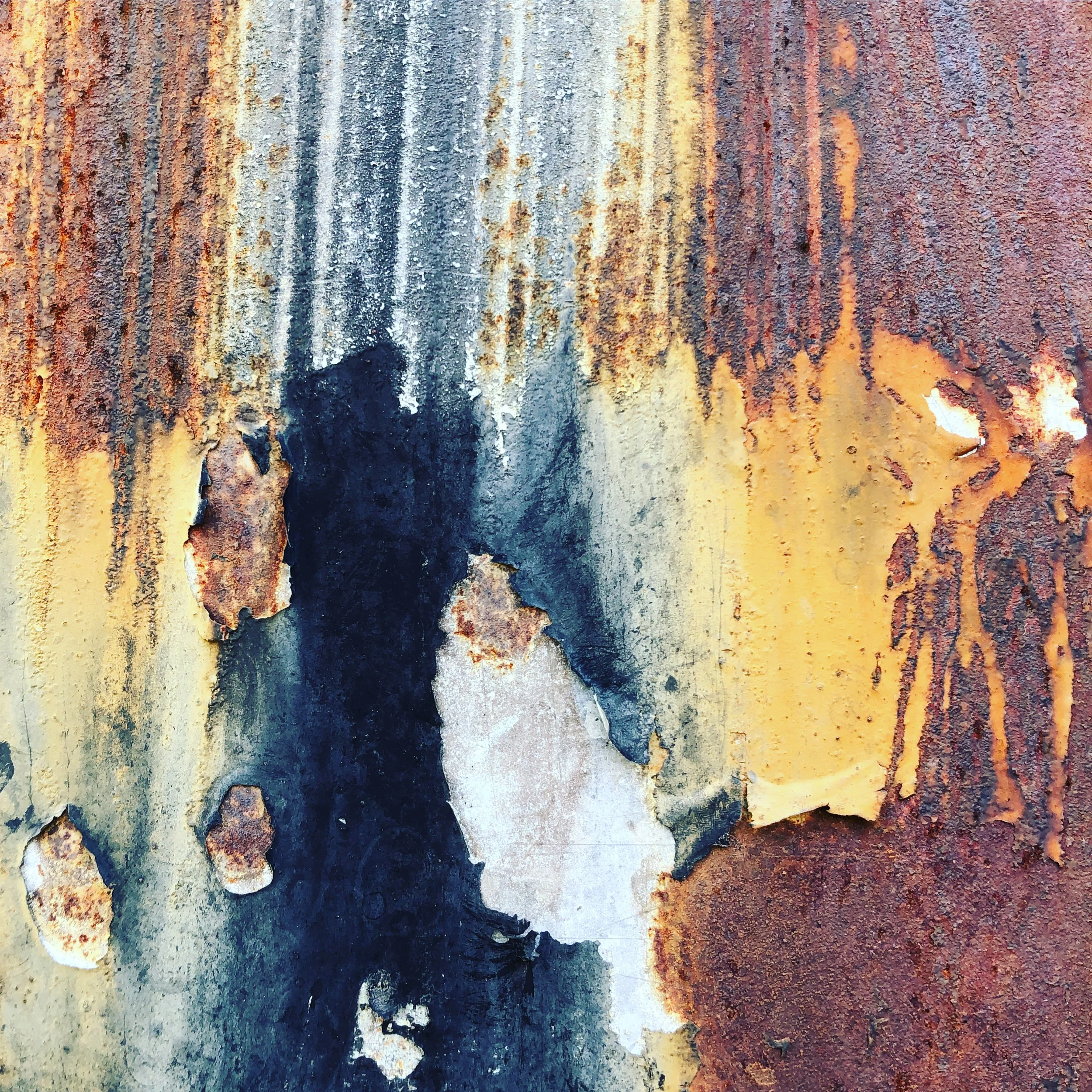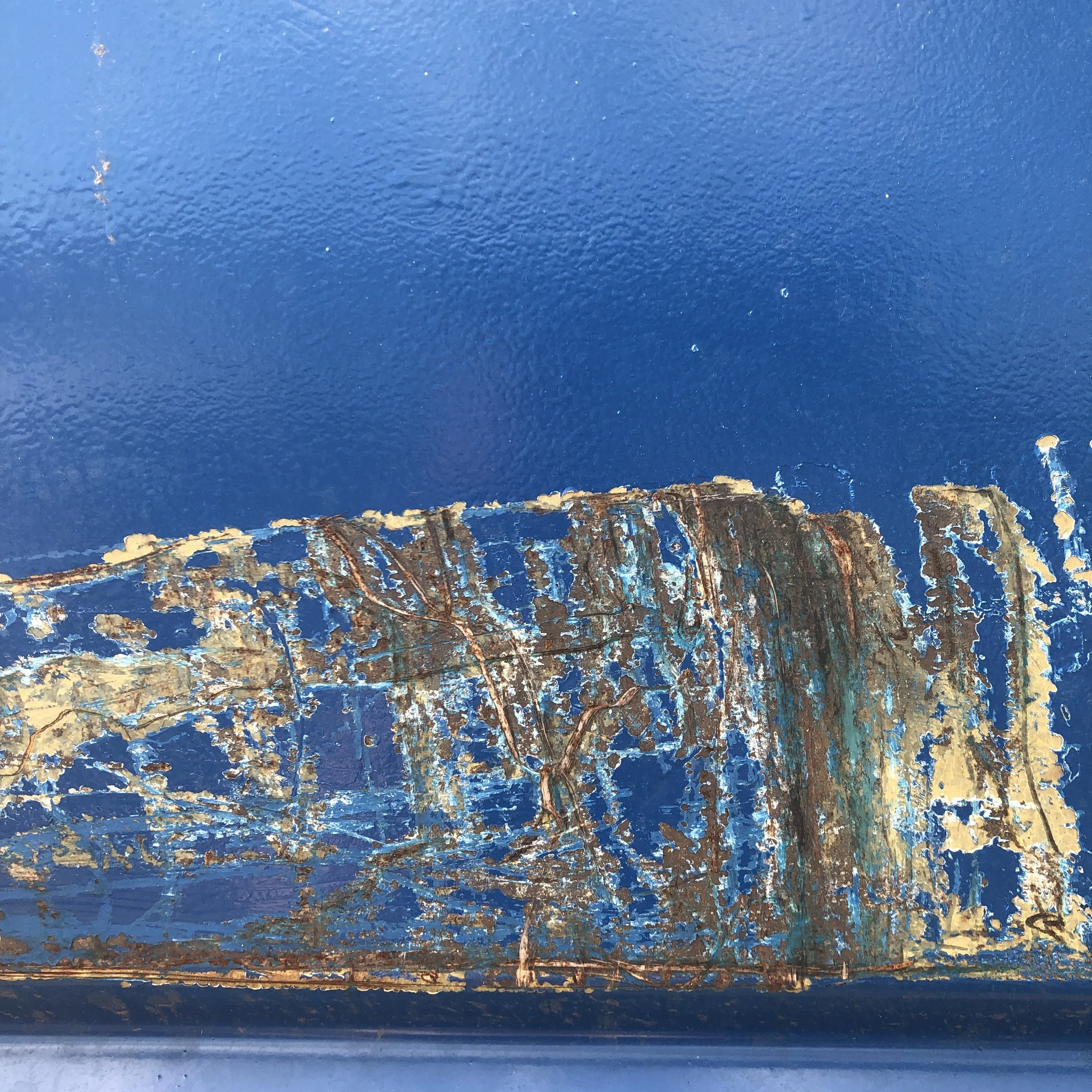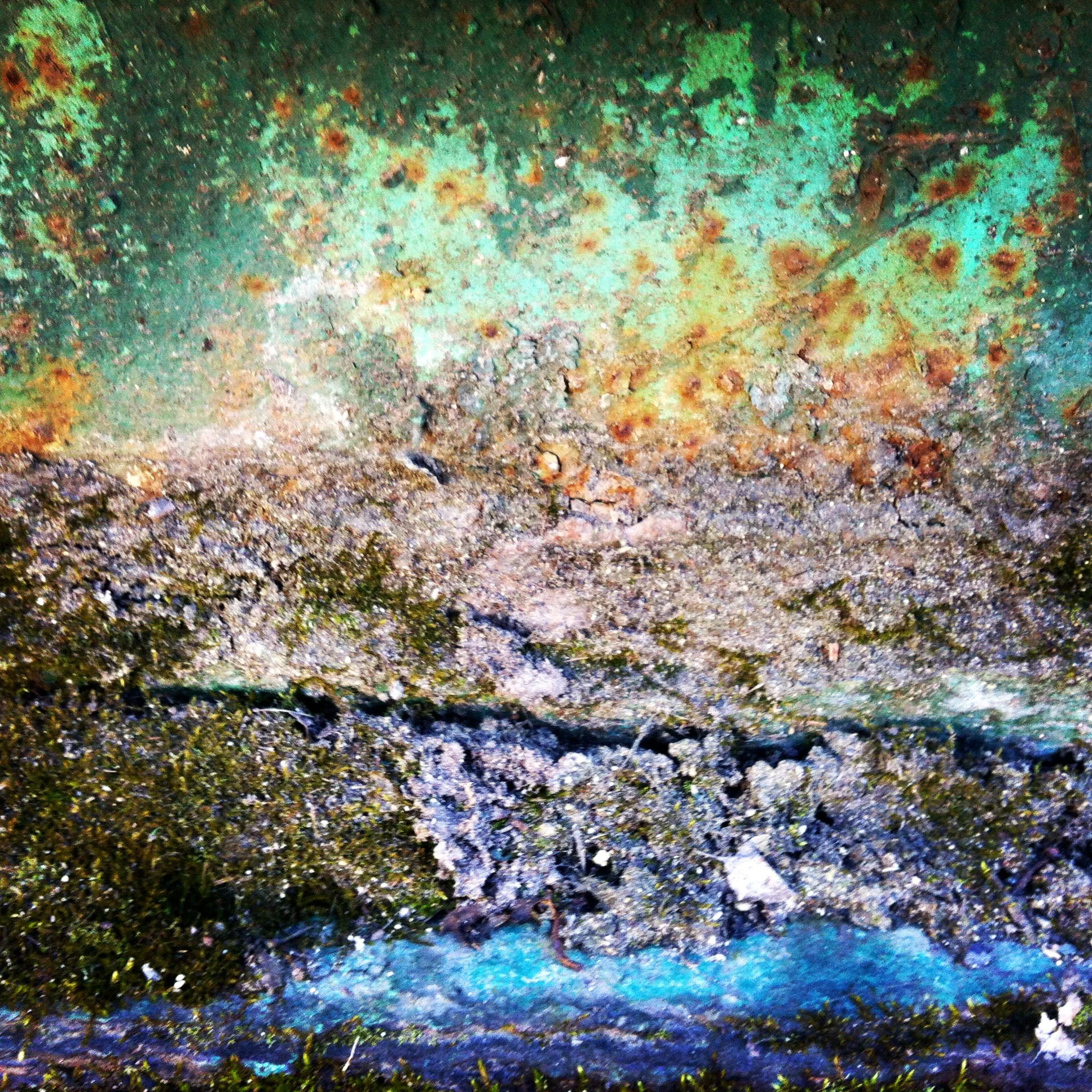OBSERVED: A Short Show about Long Looking
Observe.
A simple command that contains untold possibility; a risky act of intentionality; an intimate connection that goes beyond words.
Originally, the word observe denoted care; to hold something close, to look after it, to guard or keep safe. This idea is present in the works by these four artists, who through slow and close looking show us beauty in unexpected places and the mystery of God’s creating hand at work still in our world.
Sarah Bernhardt’s works ask us to persevere in observation, to look past what might seem obvious to find the beauty of what is. Using mirrors and light, she draws us deeply into her collages. In looking down, we find familiar things we rarely contemplate; dirt, rocks, water, leaves. Getting close to the earth, Sarah invites us into the paradox of life on earth; the now and not yet, the beauty and the brokenness, and the promise that ties it all together, that one day we’ll observe face to face.
Katherine Gastler’s photographs also invite us to observe through a mirror, using a playful gesture of focusing on the reflected image. She draws our attention to the things we might miss when our gaze finds itself distracted by the expected. In this way, she mirrors Jesus, who often flips our expectations around, drawing our attention to what we might otherwise miss in our desire to see, to have, what everyone else does.
April Parviz’s images also play with our expectations; when we hear the word dumpster, most of us probably think of refuse, of smelly bins full of things we no longer want or need. But, through slow, close looking, April draws into the unexpected abstract beauty of these rusting behemoths. Her images look like landscapes; jewell toned and expressive. It takes our eyes a moment to realize the decay in what we see. These images call us to contemplate our own humanity; on Ash Wednesday we say “from dust we came and to dust we shall return”, but on Easter Sunday, we cry out “Christ is Risen indeed, hallelujah!” We face decay, yet we find ourselves made beautiful through the power of Christ and his redeeming work. Like these dumpsters, we image the beauty present even in the midst of brokenness because of Jesus and His resurrection that set us free.
Ash Wednesday, Easter Sunday, and many other moments find their expression, their observation in churches. Many of us grew up in churches and we think we know them well, but Kati Gaschler’s images prove our vision of church may lack something yet! Peering through cross shaped holes, looking back through mirrors, dropping low under pews and looking high up to Christ on his cross, Kati’s images show us beauty of built space in new and refreshing ways, calling us into wonder and even child-like play.
As you observe these works, I invite you to think about ways you can engage in long-looking in your own life; to think of the places, the people, even the objects that prove so familiar you almost don’t see them anymore. How might these works draw you into love, into care, into observation in your own life?
Welcome to Observed.
Curated by Megan Kenyon, Observed ran from March 17, 2024 - April 1, 2024
Sarah Bernhardt







Artist Statement
“For now we see in a mirror dimly, but then face to face. Now I know in part; then I shall know fully, even as I have been fully known.” 1 Corinthians 13:12
Upon first glance, these display cases appear empty, void, an unfinished installation. With closer attention this encapsulated negative space compels you to look down, then to look up in wonder.
You gaze down at frozen halos adorning the grass, dried leaves, and stones.You can almost hear the mundane Missouri ground singing, "Holy, holy, holy." But you find their voices are reflections of mysteries above.
Gaze down at the translucent line of water suspended in time that traces the path laid when changing state. Like the line that was drawn when you were changed, no longer mere sinner, but saint. See below the reflection above.
Gaze down into this beauty, reflections of water, soil, and seed, simple yet wondrous elements that nourish our bodies and souls daily by God's grace, like Manna in this wilderness.
Gaze up at these images of the ground aglow, illuminated with a light beyond. This space between heaven and earth is not empty, but full of the hope first seen when women gazed down into a space that was empty. An empty space that compelled them to look up and see face to Face. This hope is holy ground, for though we see in a mirror dimly, we can trace the lines and care with closer attention, until at last we are compelled to look up and find that Face coming down, filling and fully renewing the space between heaven and earth.
Katherine Gastler


Artist Statement:
I was fortunate to have the chance to study abroad in Salamanca, Spain in 2007 for several months. While traveling, I became frustrated on group tours when everyone would stand in the same place and take the same conventional picture, when buying a postcard would likely better capture the view. So I began turning around to see what faced the stunning monuments or vistas that the average tourist overlooks.
Out of this process, I began noticing reflections of the monuments we came to see, as well as looking for reflections in everyday moments walking to class. These photos capture the fleeting reflections of my travel in surfaces such as windows, mirrors, telescopes, and water. You see what my camera lens captured without any significant edits after the fact.
As I consider these photos again, it feels appropriate that they will be displayed during Lent. These images were born of a physical process of turning around, the same image we use for repentance during this reflective season.
April Parviz








Artist Statement:
I’ve been taking photos of dumpsters since 2011. I love the beautiful designs that rust and decay create. So often we think of decay and age as negative things. But when I look at the eloquent designs on dumpsters, it reminds me that growth, especially through pain and change, is beautiful. I’m also regularly reflecting on how, when we communicate our pain authentically, and it is received with genuine care, it’s a very beautiful experience, for all of the individuals involved. It’s like Jesus is painting rust designs on our dumpster moments.
Kati Gaschler








Artist Statement:
I enter the church with my bag slung over my shoulder. The door creaks and echos on all the hard surfaces. I scan the narthex and the sanctuary. I appear to be alone. That's good. That's how I prefer this. My footsteps echo as I leave the narthex's thick carpet and step onto the nave's tile floor. I begin my process; I set all my things down and take a few calming breaths, taking time to recognize how thankful I am for beautiful spaces like this one, and for God who inspires them. I open my Pandora app and select John Rutter radio. I prop my phone up in a pew so that the music reverberates on the wood. It fills the entire space, despite not being very loud. I take my camera and slowly walk around. I look up, down, underneath things. I climb the church's stairs, sit in her pews, stare up at her reredos with its beautiful carvings. What do I notice? What views do I take note of? Is there a shadow being cast from a statue? A reflection in a baptismal font? Do any splashes of color fall on the walls from a stained-glass window? I meditate on the organic process of photographing this stunning house of worship. I think about the lives she has touched. I thank God that she has touched mine and that I am able to show the world how beautiful she is.
